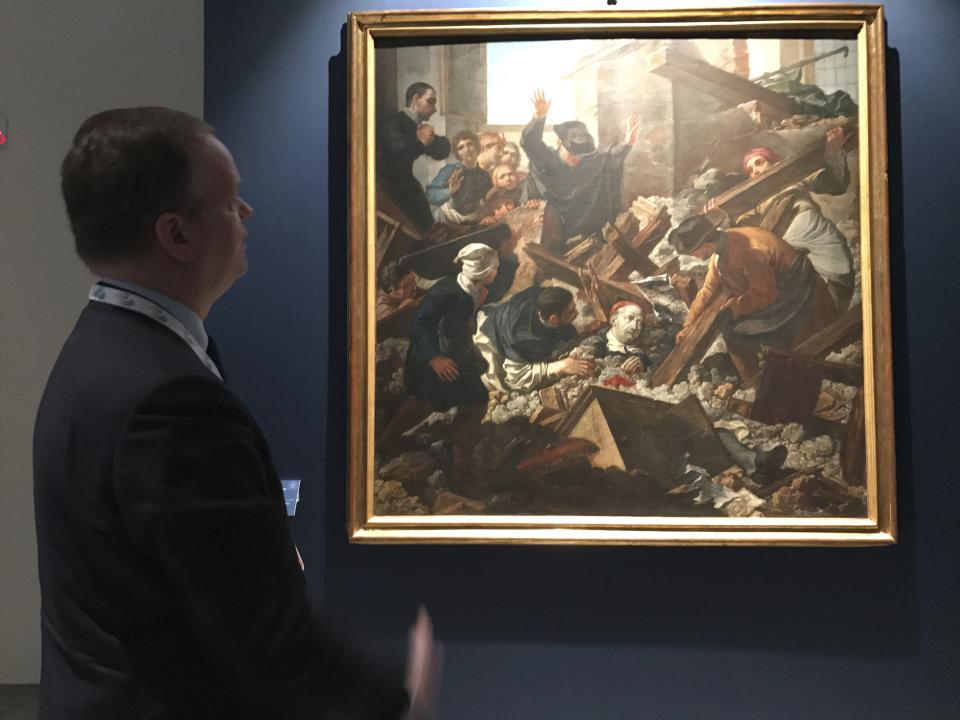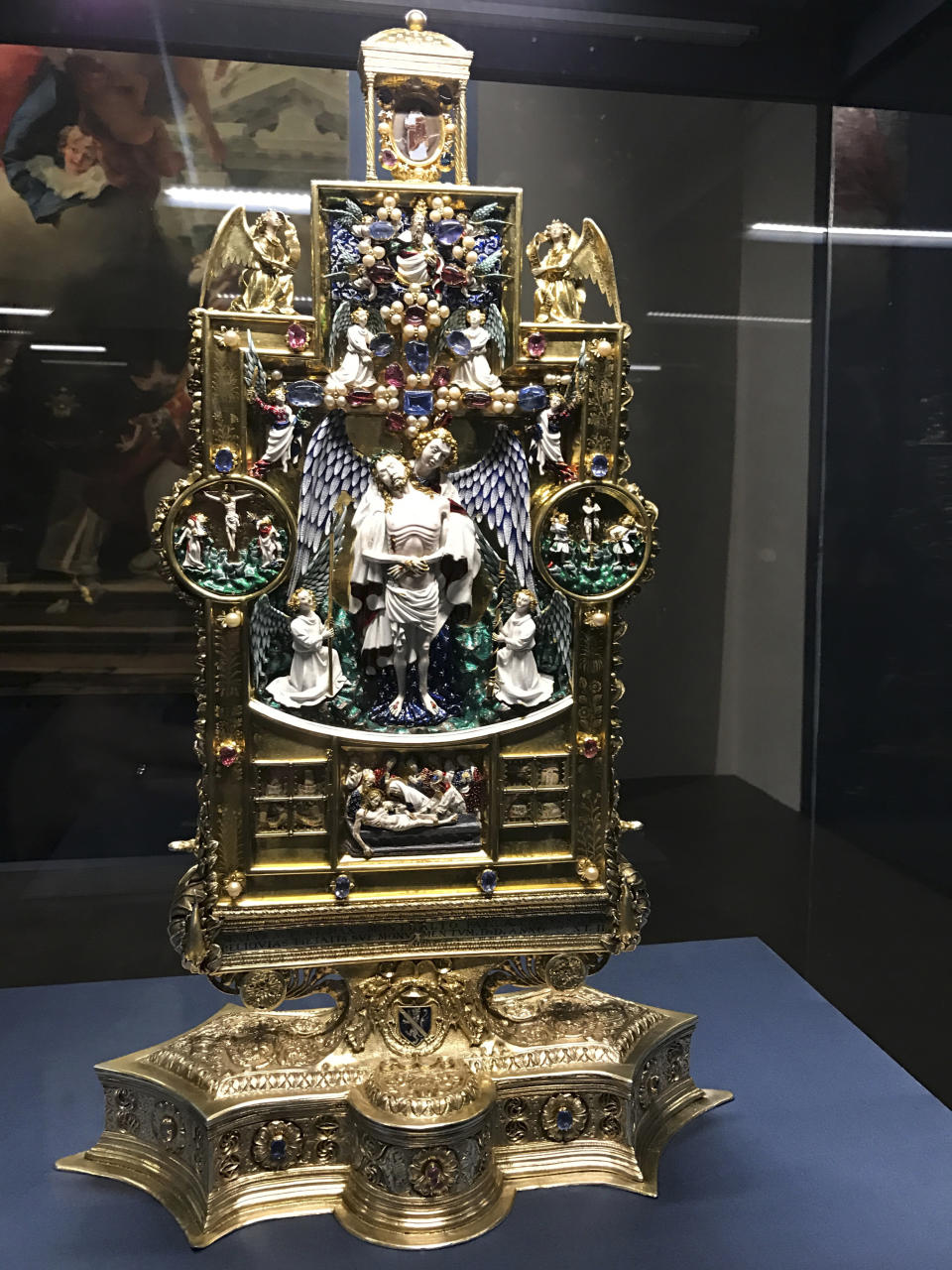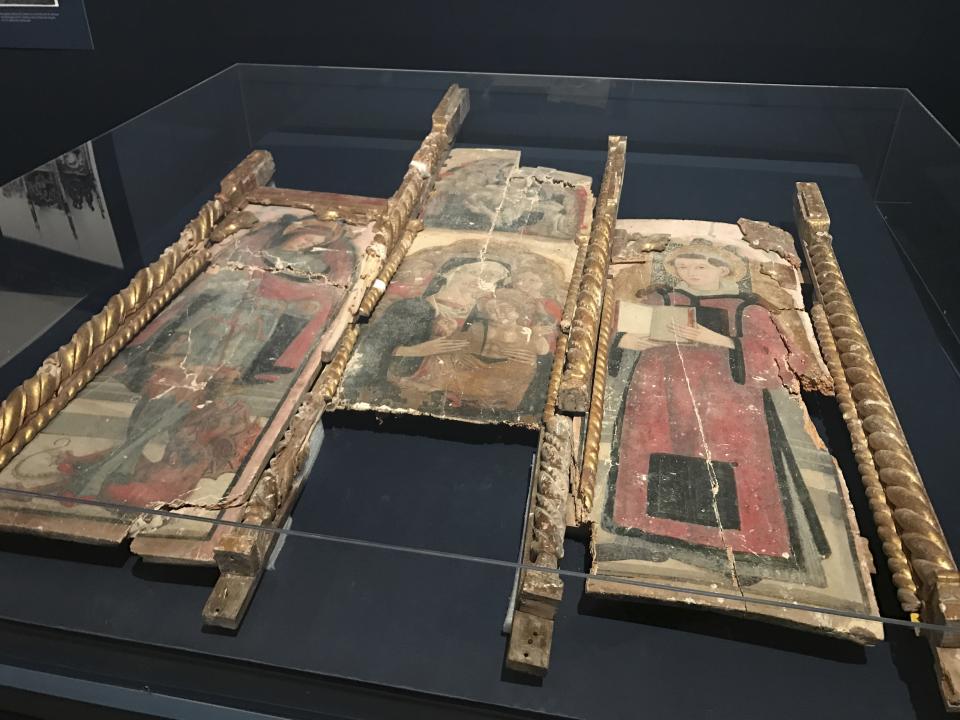Uffizi Gallery shows treasures saved from last year's quakes
FLORENCE, Italy (AP) — The Uffizi Gallery in Florence is showing solidarity with Italy's art-rich, quake-stricken Marche region by hosting an exhibit of treasures saved from a series of earthquakes last year.
Uffizi Gallery director Eike Schmidt told the Associated Press during a walk-through Friday that the 29 selected works were from churches, museums and other buildings either damaged or destroyed in powerful quakes last August and October.
"We didn't take out anything from a functioning museum. Everything needed to be rescued anyhow, because there was a risk of destruction," Schmidt said. "Our ideal was really to show some great masterpieces together with two or three damaged works ... to show also a positive story and a negative story."
The works on display are among some 6,300 pieces of art that the Italian Culture Ministry says have been saved from the central Italy quake zone.
They include a triptych featuring the Madonna and child from the San Vittorino church in Castelsantangelo sul Nera that was badly damaged in the quake and will be restored by experts in Florence.
Also on display is a gold and enameled reliquary set with precious stones that escaped unscathed, a papal gift to the then-Latin Catholic diocese of Montalto delle Marche in the 16th Century, and a painting depicting the future Pope Benedict XIII surviving an earthquake in 1688.
Schmidt said the exhibit, which runs through July 30, aims to help educate the public "about the treasures in the Marche, because often the Marche is known for its food and landscapes, but not for its artistic treasures," which are spread throughout the region in small churches and museums.
During the exhibit, 1 euro ($1.06) from each ticket price will be donated to rebuilding in the Marche region, located northeast of Rome on the Adriatic coast in central Italy.
As part of the Uffizi's support for the region, the gallery also loaned Titian's 1538 oil painting "Venus of Urbino," to a museum in Urbino to help discourage tourists from cancelling visits to the walled art city located at the northern edge of the Marche, an area that was untouched by the quakes.
"The risk is that people hear 'Marche' and they cancel their trips. That is why we did it, and it had a measurable success," Schmidt said, noting that visitation to the National Gallery in Urbino maintained its usual levels during the loan last fall.
The Uffizi is planning a similar loan of a work still to be decided to the heart of the quake zone next fall, he said.
The magnitude 6.1 quake on Aug.24 in the central regions of Umbria, Abruzzo and Marche killed about 300 people. The more powerful October quakes in the same regions topped buildings but caused no further deaths as the most vulnerable areas had already been evacuated.



